Valentine Bush Creates a Welcome Splash of Red in Winter Gardens
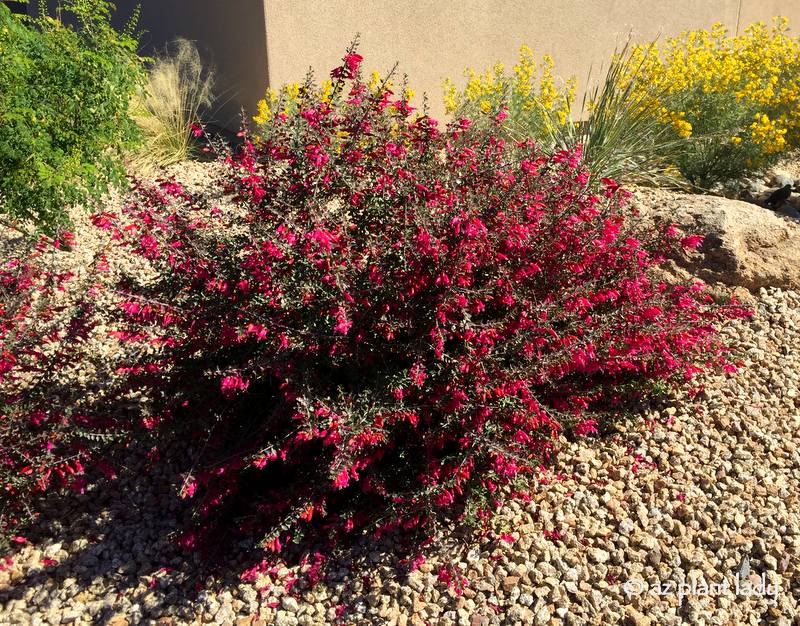
Valentine Bush (Eremophila maculata ‘Valentine’)
The Vibrant Beauty of Valentine Bush
A Colorful Gem for Your Landscape
How would you like gorgeous red, tubular flowers blooming at Christmas time and lasting past Valentine’s Day, all packaged up in an attractive, low-maintenance shrub? Believe it or not, such a shrub exists. Let me introduce you to Valentine Bush (Eremophila maculata ‘Valentine’).
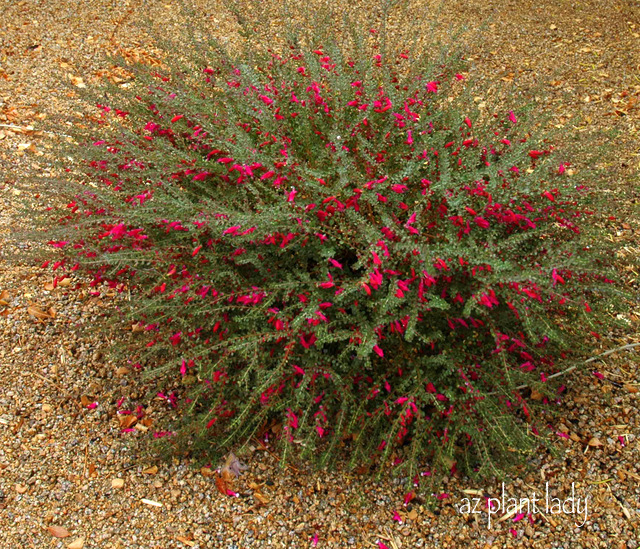
A Promising Valentine Bush Introduction
My first experience with this colorful shrub occurred in 2000 when I was offered two free Valentine shrubs to test out on the golf course where I was working. Never one to pass up free plants, I was more than happy to try these new shrubs out.
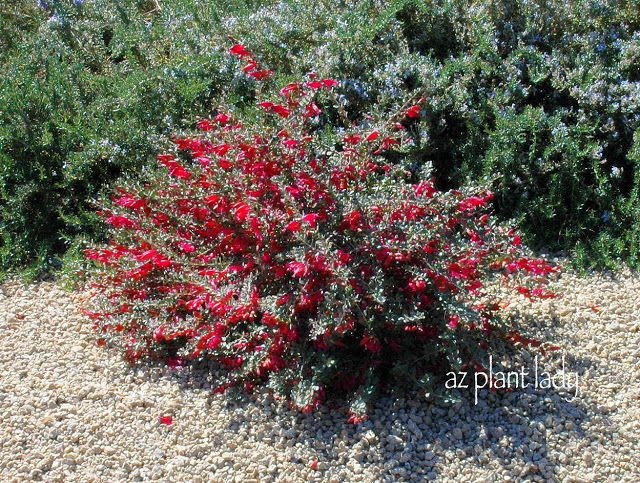
Young Valentine, six months after planting, next to Trailing Rosemary.
Flourishing Garden Shrub Beauty
Those new shrubs did so well that a couple of years later, I had planted over fifty of them planted all around the golf course. I love their cool-season blooms, which add a welcome splash of color when many plants aren’t blooming, and the dark green foliage continues to add beauty to the landscape even when their flowers fade.
Nowadays, you will find Valentine in both commercial and residential landscapes. An interesting fact that many may not know is that many of the arid-adapted plants that thrive here are native to Australia, including the species Eremophila.
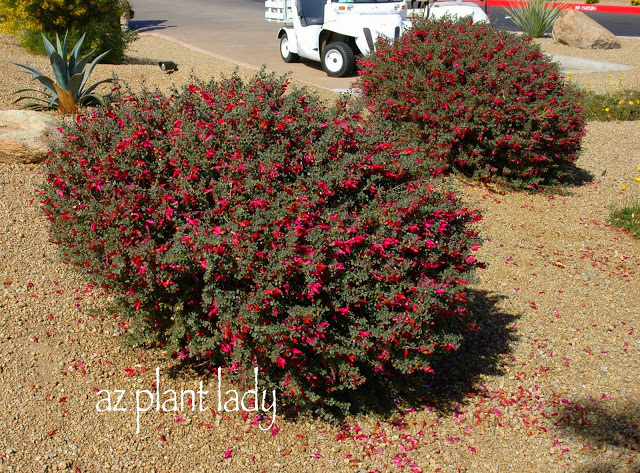
Landscaping with Valentine Bush
Valentine provides much need color in the landscape during the winter months and will bloom through early spring. Red is often a color missing in the desert plant color palette that this shrub provides. Valentine grows at a moderate rate and will reach a mature size of 3-4 feet high and 4 feet wide.
I pair it with groundcovers such as blackfoot daisy (Melampodium leucanthum) or trailing rosemary (Rosmarinus officinalis), and perennials such as Parry’s penstemon (Penstemon parryi) and desert marigold (Baileya multiradiata).
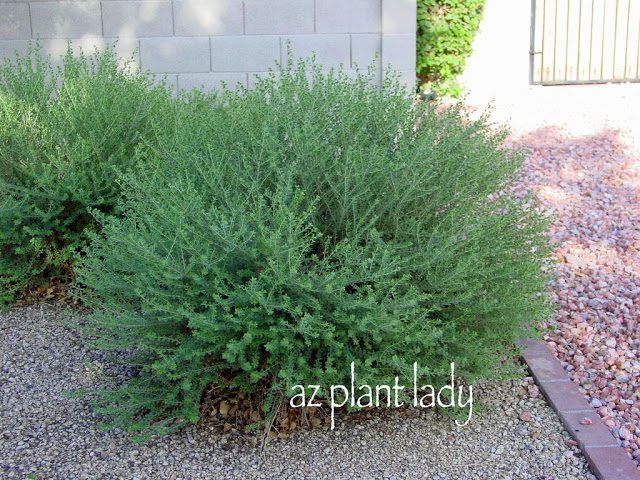
Valentine when not in flower.
A Shrub that Has Year-Round Attractiveness
When not in flower, Valentine is still very attractive and is hardy to 15 degrees F. It does best when planted in full and reflected in the sun. Their leaves turn maroon at the tips during the winter adding some fall color to the landscape.
Caring for Valentine Bush with Proper Maintenance
Valentine does best with regular irrigation and soils with good drainage. If planted in areas with wetter soils, let the soil dry out between watering to prevent root rot.
You will probably not believe this, especially coming from me – the person who rants and raves about beautiful shrubs that have been incorrectly pruned by being sheared, but here it is: Valentine shrubs should be sheared. That’s right, I said they should be shared.
Believe it or not, there are some types of shrubs where shearing is the best way to prune them, and this is true for Valentine. They should be pruned ONCE a year, once they have finished blooming in the spring. DO NOT prune later in the year as this will remove the branches that will produce the flowers later in the year.
The Perfect Shrub for the Desert Southwest
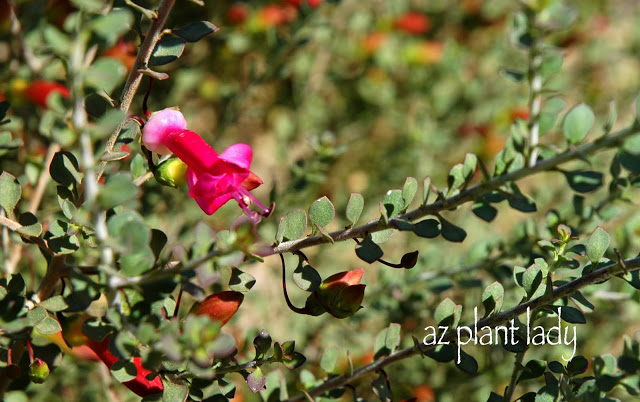
Here is the first bloom of this season on my Valentine shrub.
Well, would any of you be surprised to know that Valentine is my favorite shrub? I mean, what is there not to love? It has everything – low-maintenance, attractive foliage, thrives in the heat and sun, and most importantly, gorgeous winter color.
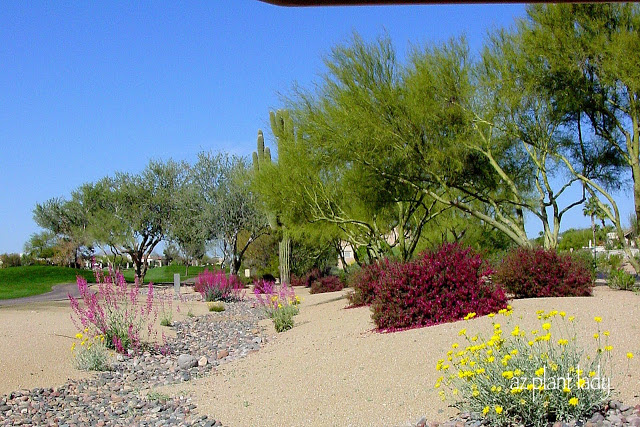
In this landscape area, I designed, you can see Valentine in the background paired with Parry’s Penstemon and Desert Marigold.
So run, don’t walk, and go and add Valentine to your landscape.
A Stroll Through a Flowering Winter’s Garden

 Noelle Johnson, aka, 'AZ Plant Lady' is a author, horticulturist, and landscape consultant who helps people learn how to create, grow, and maintain beautiful desert gardens that thrive in a hot, dry climate. She does this through her consulting services, her online class Desert Gardening 101, and her monthly membership club, Through the Garden Gate. As she likes to tell desert-dwellers, "Gardening in the desert isn't hard, but it is different."
Noelle Johnson, aka, 'AZ Plant Lady' is a author, horticulturist, and landscape consultant who helps people learn how to create, grow, and maintain beautiful desert gardens that thrive in a hot, dry climate. She does this through her consulting services, her online class Desert Gardening 101, and her monthly membership club, Through the Garden Gate. As she likes to tell desert-dwellers, "Gardening in the desert isn't hard, but it is different."
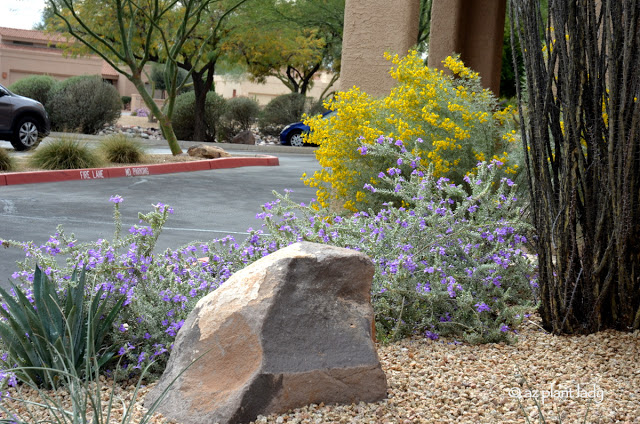
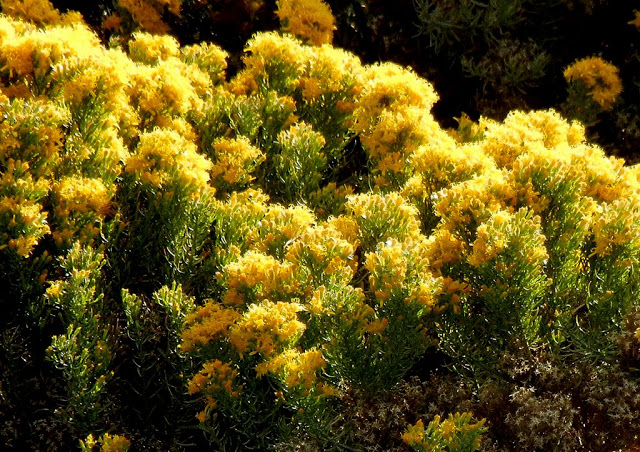
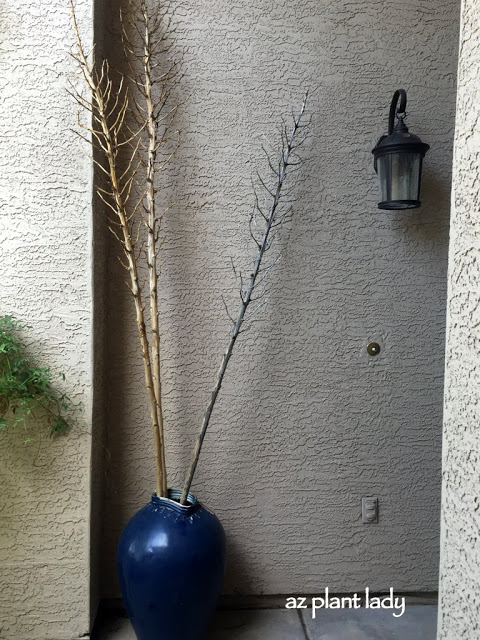
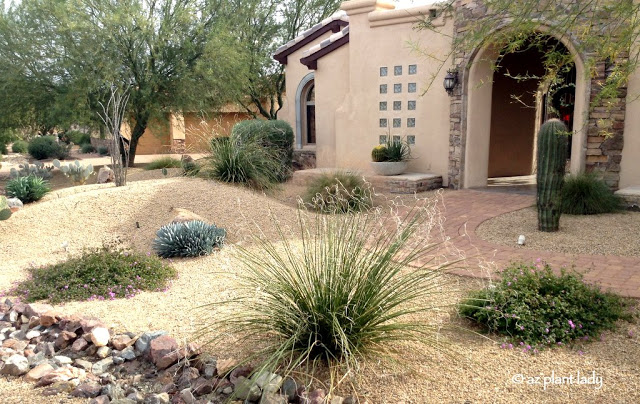
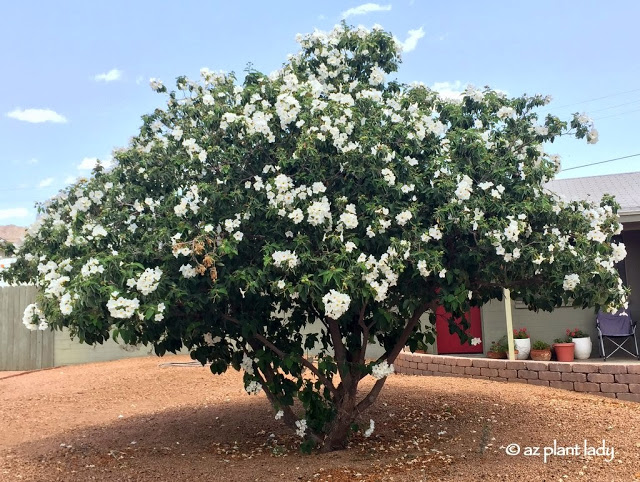
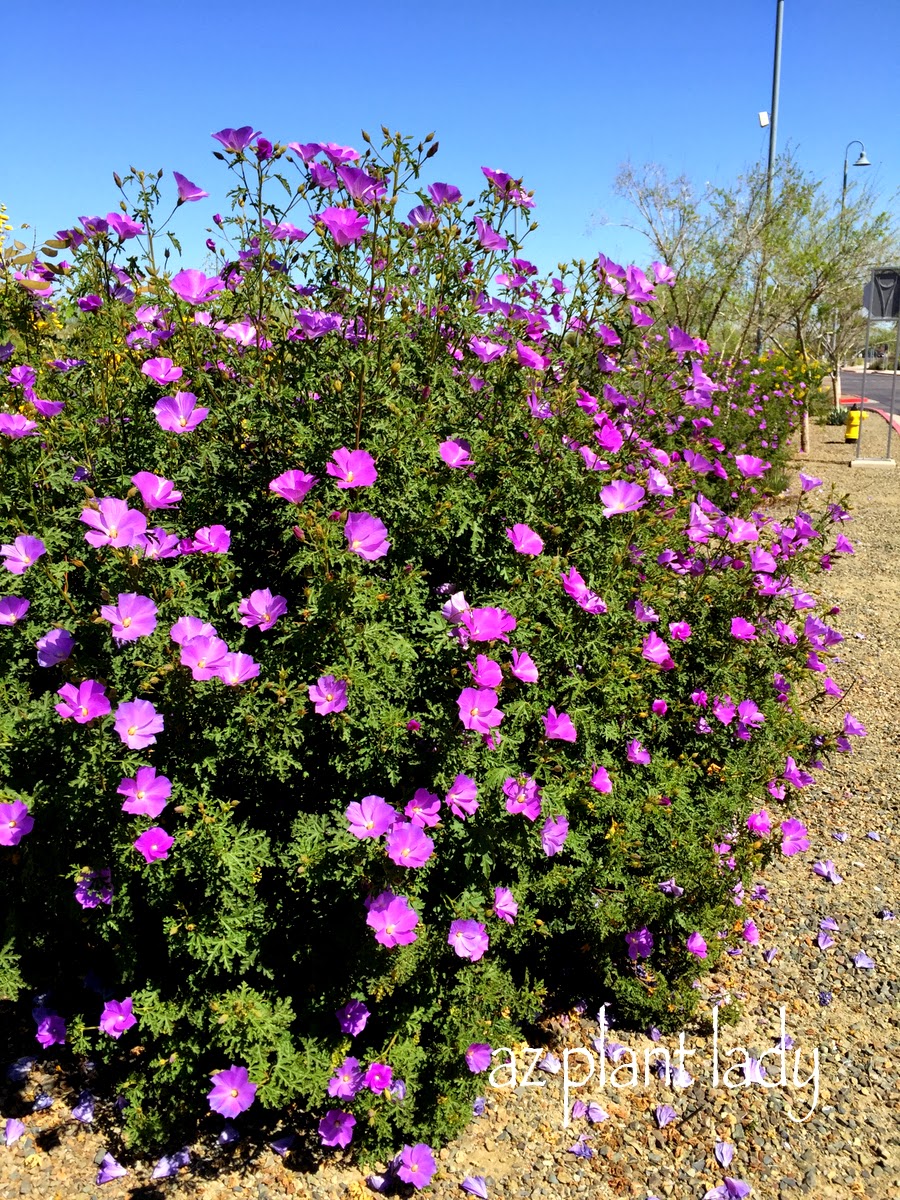







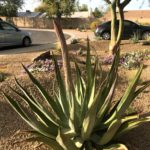
I am a bit excited about this! It's almost perfect – except for the size – and I am in Australia!! Will have to do a bit more reading… Thanks so much for the info!
I love this pretty shrub also-to think it blooms that long and it's low maintenance. Doesn't sound like though it would be good for Michigan. But beautiful anyway.
vickie
Gorgeous! I love the photo too when it is not in bloom…stunning just as foliage…fantastic!
I love this last photo especially showing more of a landscape. I think the negative space works so brilliantly in between the beautiful plantings. It is true to a desert feeling. Carol
So beautiful and colorful!
That is AWESOME! How gorgeous! I wonder how it would do with Houston's humidity?
Oh, I didnt' know that the desert has such luscious bushes and brightly coloured flowers. It beautifies the landscape.
I can see why it is your favorite!
I love the name as well. It even looks good when not in bloom, a definite plus!
Rosey
I love coming here to see what is beautiful in other parts of our country. Each region has beauty of it's own.This color is wonderful.
Balisha
Magnificent Australian native! The color is sublime, I agree!! Wish I had room for one.
Alice
It's most beautiful! Thank you for introducing us to the desert beauties! The landscape area that you designed is has a wonderful combination of colours. I've never seen valentines before…not even on the World Wide Web!
This post came at the perfect time. I'm really starting to jones for winter color. You'll have to show us those marroon tips later!
Noelle, a beautiful design! I love a dry creek and the visual you have created.
My name is Bjorg Nina , I´m from Norway. I saw your blog by chance and find it very interesting.
I try to explore some – to me- new blogs that deserve an award.
Please, visit my blog, and I give you the award and a task included ;:O))
Have a nice day!
Wow Noelle, what a nice plant. I will do some more research on this one!!
From your title I was guessing something red . . . and I was right! With hardiness to just 15 degrees, I won't be adding it to my cold-winter garden. But it was great to read about your favorite shrub. Gotta love something that actually LIKES reflected heat, wow.
These are just gorgeous shrubs. I can imagine the hummingbirds must go crazy for them. They look so pretty with the other combinations of plants and trees.
What a lovely well behaved shrub, looks great in bloom. Thanks for the introduction. 🙂
Very pretty shrub and has many blooms! I can see why you like it so much. 🙂
Oh my gosh, Noelle you crack me up! I was halfway through reading and thought, "wow, I bet a bunch of people in her neighborhood shear this poor thing into frisbees and lolipops". then… "Oh. ok" Thanks for sharing this Aussie lovely!
Love that shrub. Fantastic!! That shade of red is a winner!
What a great shrub. I love that shade of red in the blossoms. And easy to care for? What more could you ask!!
What a beautiful shrub! And your last photo is really wonderful! I can imagine how beautiful it must be to have 50 of these plants! 🙂
What a beautiful bush. I love the color, it is so enchanting.
so pleased you love this plant. I believe it is popularly called emu flower because the flower looks a bit like an emu. I love the planting you did with the sandy soil in between. but personally I have difficulty with red and have little or no red in my garden. But I guess against the sand bright colours like red are good, and pastels like i am into probably look faded in the bright sunlight.
Hi All,
Thank you all for your overwhelming response to my Valentine shrub. I am glad you like it as much as I do.
Sarah, I am so glad you are getting some for your nursery. Please let me know what you think.
Carol, thank you for the compliment. We use negative space often in desert landscaping. It actually highlights the natural shapes of the plants.
Evelyn, I hope you are able to find this one in Australia. If not, a closely related one is Eremophila brevifolia.
Alice, if you ever find some room, please try one, I think you will love it.
Kanak, I always enjoy the beautiful plants that you showcase from your part of the world.
Catherine, I do see hummingbirds around them.
Bjorg Nina, thank you for visiting for the first time. I will be visiting your blog soon.
Hi Noelle, I've been seeing your "name" around and decided to visit you. As I was reading about Valentine, I thought, nice but probably not hardy where I live [Zone 8, Pacific Northwest]. But I can do 15 degrees, heck yeah! Outstanding plant in and out of bloom. Gimme, gimme! Your design is fabulous.
They look so lovely, Im sure that I wouldn't even waste the branches when shearing and replant them all over again.
Can these grow in the tropical climate or they can only survive in the desert?
That first bloom is very pretty! Fuchsia color.
Hello Again,
Grace,
Thank you for the compliment. Our coldest temperatures reach in the high teens for a couple of nights a year. I haven't had problems with frost damage, but maybe with multiple low temps in the teens, they might. But, maybe the bottom growth would survive.
James,
I know it grows in Texas, which is somewhat more humid then we are. I think you won't know if it will grow unless you try it. I don't think the 'Valentine' variety is available internationally, but you can try Eremophila brevifolia which may be.
Hi,
Never heard of this shrub before. I like the bush itself more than when in bloom. To me all that red is the desert during winter just does not seem right. Then again I'm also not a fan of Knock out roses or those encore azaleas.
Like Grace this was my first visit here, I'll be back.
Thank you! just what I’ve been looking for! Can I plant Desert Marigold and Parry’s Penstemon now in my garden? I’m looking for color until my spring flowers bloom.
Thanks!
Noelle,
Thank you for sharing the “growth” of your Valentines. I agree they need some negative space to fully display their glorious color. How lovely to see color in the Winter, especially for our resident hummers!
Sandy
Do Valentine bushes attract bees? I’d like to plant near my pool but prefer NOT to attract bees there. I’ve googled and cannot find the answer!
Hello Jennifer,
Not that I have noticed. I’ve never noticed bees on my Valentine bushes, so you should be fine adding them to your pool area. I hope this helps 🙂
How often and how much should I water the valentine emu after first planting it as a small specimen?
Hello Mary,
How often you water this lovely shrub depends on where you live. The major desert metro areas have differing watering requirements depending on the type of soil, rainfall, and weather. I recommend looking online for landscape watering guidelines for the closest major city near you and water according to their shrub guidelines.